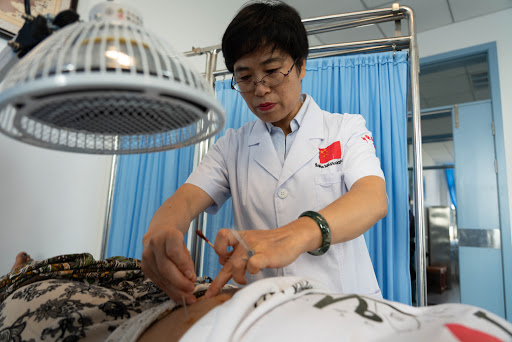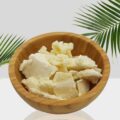
Acupuncture is a form of alternative medicine and a key component of traditional Chinese medicine in which thin needles are inserted into the body. It was devised before 2500 BCE in China and by the late 20th century was used in many other areas of the world. Acupuncture consists of the insertion of one or several small metal needles into the skin and underlying tissues at precise points on the body.
Acupuncture points are anatomically defined areas on the skin relative to certain landmarks on the body. The original Chinese pictographs for acupoints indicated that there were holes in the skin through which qi energy could flow. These acupoints can be reliably detected with electrodermal measurements. A dull, deep, aching feeling called “De Qi” often accompanies the stimulation of body acupuncture points.
In the history of acupuncture in China, Japan, the Korean peninsula and elsewhere in Asia, there have been periods when its practice fell into decline, or, with the advent of modern Western medicine, when it was banned or neglected. During the last four decades, however, great importance has been attached by the Chinese authorities to traditional Chinese medicine in general and to acupuncture in particular.
Concurrently, in Europe and the Americas, there has been growing interest in the therapeutic applications of acupuncture and in the search for explanations of its modes of action, in terms of modern scientific knowledge. In the past 20 years many new acupuncture points have been recognized, notably in connection with auricular acupuncture.
How Acupuncture Works
Acupuncture grew out of ancient Chinese philosophy’s dualistic cosmic theory of the yin and the yang. The yin, the female principle, is passive and dark and is represented by the earth; the yang, the male principle, is active and light and is represented by the heavens. The forces of yin and yang act in the human body as they do throughout the natural universe as a whole. Disease or physical disharmony is caused by an imbalance or undue preponderance of these two forces in the body, and the goal of Chinese medicine is to bring the yin and the yang back into balance with each other, thus restoring the person to health.
An imbalance of yin and yang results in an obstruction of the life force, or qi, in the body. Qi flows through 12 meridians, or pathways, in the body, each in turn associated with a major visceral organ (liver, kidney, etc.) and with a functional body system. Acupuncture is designed to affect the distribution of yin and yang in these channels so that the qi will be enabled to flow freely and harmoniously.
How Long Does It Take For Acupuncture To Work
A typical acupuncture session last anywhere from 60 to 90 minutes, though most of this time may be spent discussing your symptoms and concerns with your practitioner sans needles. The actual treatment portion of acupuncture may last around 30 minutes according to Healthline, though you don’t necessarily have needles in your skin for that long!
In terms of results, it’s nearly impossible to say what one should expect, as everyone responds to and experiences acupuncture differently.
“There is no universal response to acupuncture. Some people feel relaxed and may be a little tired, others feel energized and ready for anything. Some people experience an improvement right away and for others it can take several treatments before noticing a positive change.
Modern studies have found that acupuncture often provides measurable improvements in health outcomes, particularly in the area of chronic pain. A new study published in the journal Brain, is providing better understanding of how acupuncture works to relieve pain. Studies like this will ultimately help optimize the therapy to provide effective, non-pharmacological care for chronic pain patients. Also read: World Health Organization Acupuncture List Of Conditions





